Overhead Powerlines: recognise the dangers and stay safe
29 August 2023How safe are you when you are working near overhead powerlines?
Every year people are killed or seriously injured when they come into contact with high voltage electricity. Distractions, working long hours and time pressures can all impact on how we work and our safety. Taking time to plan, being prepared and focusing on the way we work can help keep us safe.
Where equipment or machinery is used near overhead power lines (OHPLs) the risk must be considered and controlled.
Plan ahead
- Contact your electricity network operator (e.g. SSEN) for copies of plans showing where power lines are situated. Go over the maps with farm workers/contractors so they are aware of the location and voltages of the overhead power lines, before starting work.
- Find out the maximum height of any equipment and machinery that may be used on site when all parts of the machinery are fully extended.
- Plan your work so it avoids high risk areas.
- Clearly signpost the dangers with high visibility warning notices.
- Keep overhead power lines in view when moving plant and equipment.
- Display a cab sticker: search for “ENA cab sticker” online.
- If in doubt, contact your electricity network operator.
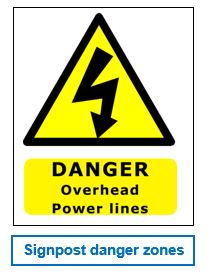
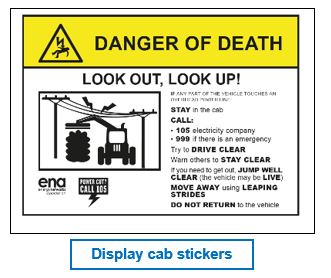
How to get your OHPL map
- Contact your electricity network operator. For Scotland, it’s SSEN: email ge@ssen.co.uk requesting a map showing all overhead powerlines. Provide a map refence or what3words reference.
- You will initially get an automatic reply, followed up by an email with the map attached.

If your machinery touches an overhead line
- Call the emergency services. Give them your location, tell them what has happened and that electricity wires are involved, and ask them to contact the line’s owner.
- If you are in a vehicle that has touched a wire, either stay in the vehicle or, if you need to get out, jump out of it as far as you can.
- Electrocution is possible if anyone touches both the machine and the ground at the same time. If you need to get out jump well clear so that no simultaneous contact is made between you, the vehicle and the ground. Do not touch any wires. Stay clear and warn others not to approach.
- Be aware that if a live wire is touching the ground the area around it may be live. Keep a safe distance away from the wire or anything else it may be touching and keep others away.
- Do not return to the vehicle until it has been confirmed that it is safe to do so.
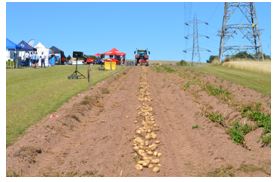
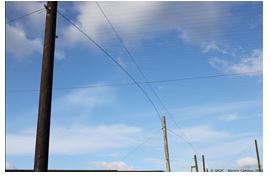
Keeping your farm safe: Apps and sites to improve farm safety
Top Agricultural apps and sites for keeping your farm safe and tracking people in the event of accidents.

what3words
The simplest way to find, share and navigate to precise locations.
Available in Google Play and Apple’s App Store

Life360
You can get automatic notifications when family or farm workers come and go from the farm and when they complete a job.
Available in Google Play and Apple’s App Store
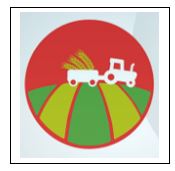
AgriKids
Play, interact and learn about farm safety. Ideal for children aged 6 and over.

NTSAg (University of Aberdeen)
Situation awareness checklist, key checks, to-do lists and reading materials.
More Information
Avoiding danger from overhead power lines: Guidance Note GS6 (Fourth edition) http://www.hse.gov.uk/pubns/gs6.htm
Working safely near overhead electricity power lines: Agriculture Information Sheet No 8
http://www.hse.gov.uk/pubns/ais8.htm
ENA cab sticker and other resources
https://distribution.ssen.co.uk/safety/resources/
Download the app to identify your location
Resource library: Agriculture:
ENA agricultural safety leaflet
Sign up to the FAS newsletter
Receive updates on news, events and publications from Scotland’s Farm Advisory Service
